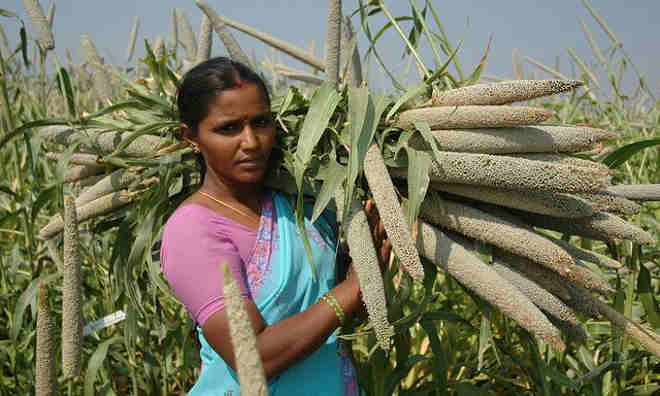Currently, between 870 million and 1.3 billion people around the world do not get enough to eat. A nearly equal amount – 1.4 billion – are overweight, and suffer from myriad health problems such as diabetes, high blood pressure, and heart disease as a result. Furthermore, the global population expected to grow to 9 billion by the year 2050, with growth concentrated in urban areas and emerging economies. In the face of rapid population growth, and changing the food system to fight hunger and obesity at the same time is of the utmost importance. In anticipation of World Population Day on July 11th, Food Tank will feature research and innovations that are working to support the health and nutrition of a growing global population.
Peace, a 40-year old single mother of four, earns a living growing crops in her two gardens in the Kole District of northern Uganda. “One day she hopes to start a petty trade business and to plant rice in order to increase her household’s income,” according to a case study conducted by the International Food Policy Research Institute (IFPRI).
Peace is an empowered woman in the agricultural sector, according to the Women’s Empowerment in Agriculture Index (WEAI), launched in 2012 by IFPRI, the Feed the Future Initiative, the Oxford Poverty and Human Development Initiative (OPHI) and the U.S. Agency for International Development (USAID).
The U.N. Food and Agriculture Organization (FAO) estimates that female farmers contribute to more than 50 percent of the world’s food production, whereas in sub-Saharan Africa and the Caribbean they make up approximately 80 percent of the agricultural labor force. But despite the relentless efforts toward achieving the third Millennium Development Goal (MDG) of gender equality and women’s empowerment by 2015, hundreds of thousands of female farmers worldwide are still facing multiple challenges due to social constraints, ranging from less access to agricultural resources and decision-making to land grabbing and lack of education.
Based on pilot surveys conducted in Bangladesh, Guatemala and Uganda, the Index aims at “increasing understanding of the connections between women’s empowerment, food security and agricultural growth” and measures women’s engagement in agriculture over five areas: production, resources, income, leadership and time allocation. A woman is considered empowered if she fulfills the conditions required by the index in at least four out of five domains. In addition to tracking the nature of empowerment, the WEAI also offers insight into gender inequality within the household, which is essential to understand and analyze the gender empowerment gap in focus countries.
A year after the index was founded, Emily Hogue, team leader for monitoring and evaluation in the Bureau for Food Security at USAID, spoke in an interview with IFPRI about major achievements made over the last year as well as outstanding issues that have to be addressed in the foreseeable future.
“We created the WEAI as a monitoring and evaluation (M&E) tool to track the effects of our programs over time, but one of the most exciting uses of the WEAI has been as a diagnostic tool to identify constraints women face in the agriculture sector,” said Houge. “Once we identify those constraints, we tailor our programs to address them,” she went on to say.
Hogue pointed out that some organizations, including the International Fund for Agricultural Development (IFAD) and CARE International, have already expressed willingness to implement the WEAI as a tool in monitoring their own projects in the developing countries.
The WEAI Resource Center at IFPRI provides support to users on collecting and analyzing the WEAI data as well as adjusting the questionnaire for new contexts. Moreover, IFPRI along with its partners selected four dissertation research fellowships on the WEAI that seek to examine how women’s empowerment impacts other development outcomes, including improved nutrition.
To read the whole interview, click here.
To watch the WEAI video, click here.












